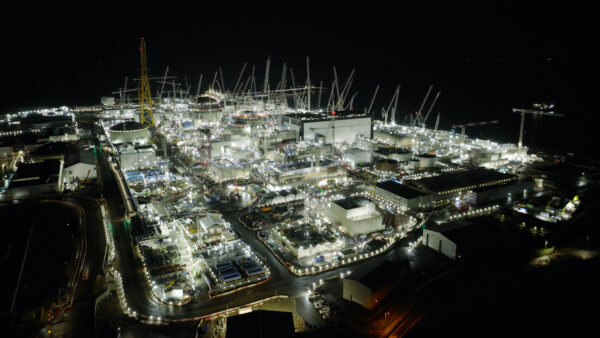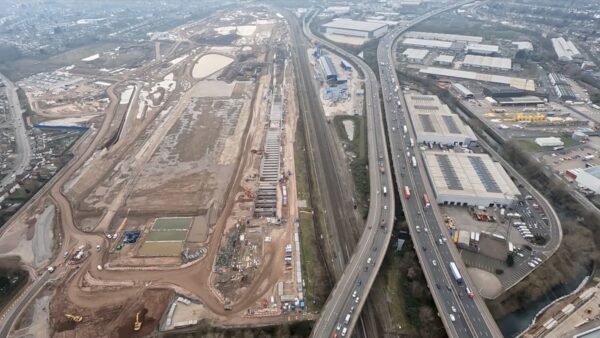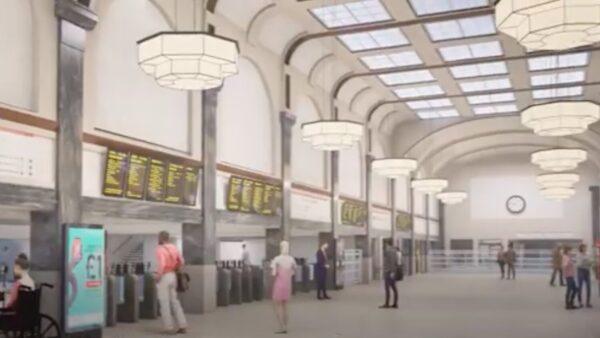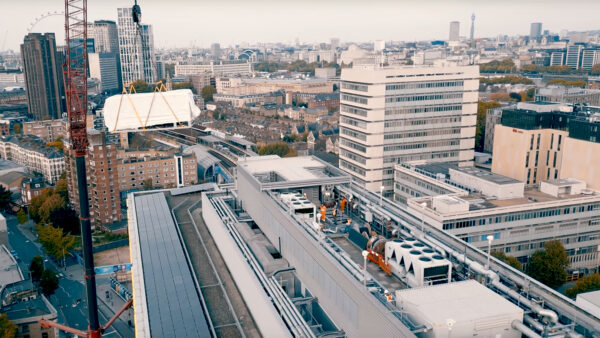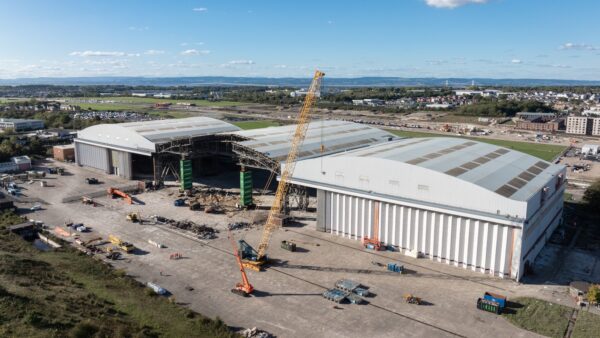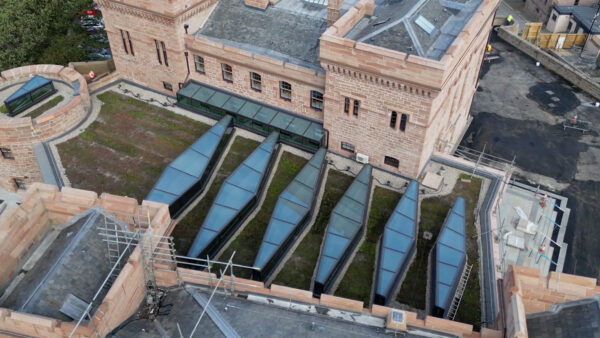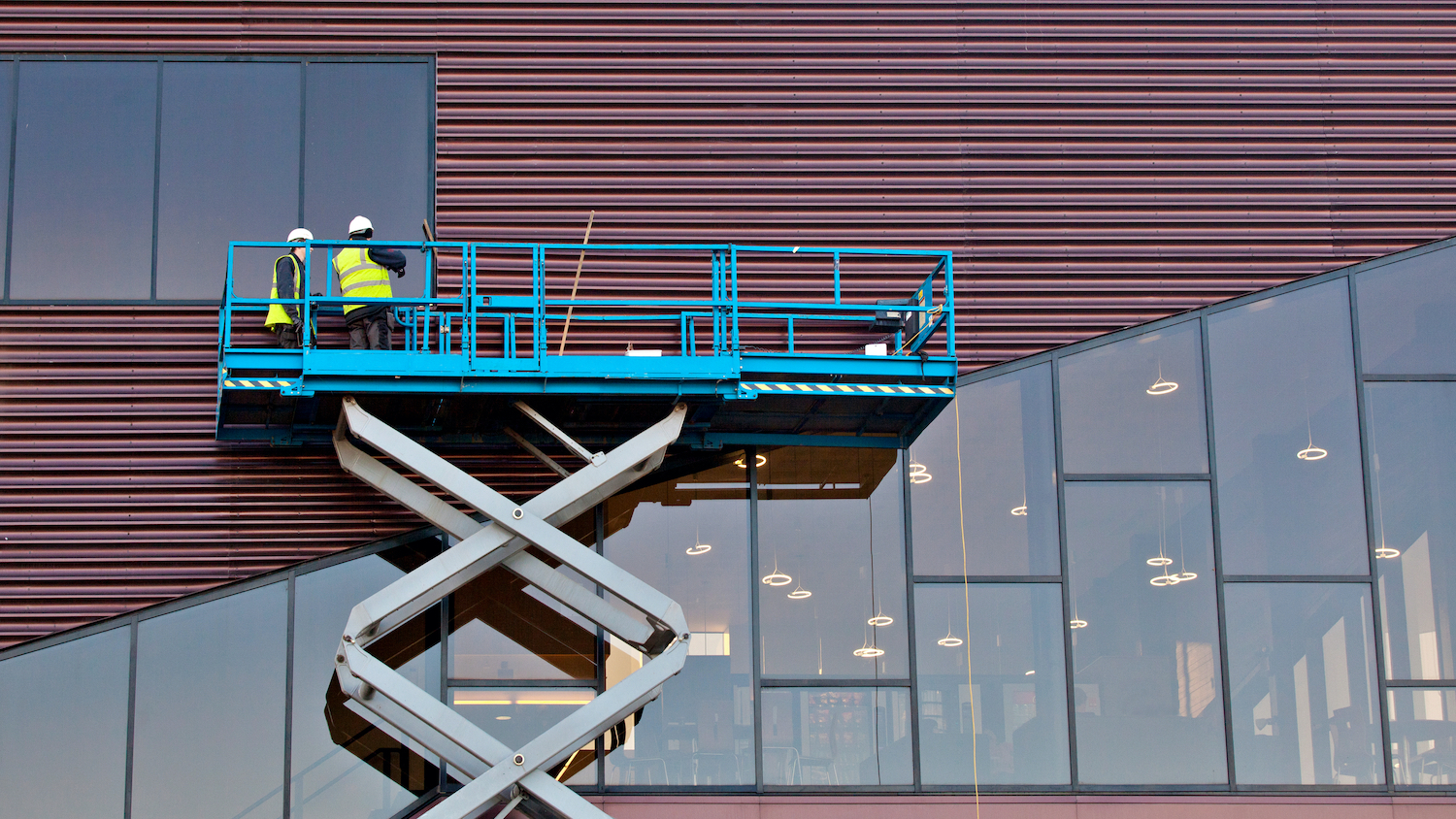HS2’s tunnel excavation between London and the West Midlands has been completed, marking a significant milestone for the project.
The 125m-long tunnel boring machine (TBM) – named Elizabeth after 19th-century philanthropist Elizabeth Cadbury – was launched near the Warwickshire village of Water Orton in March 2024.
The TBM has now broken through at Washwood Heath, 19 months after starting its journey.
Two identical machines were used to dig the 5.6km Bromford tunnel that will carry trains under the M6 and eastern outskirts of Birmingham. The first TBM – Mary Ann – broke through earlier this year.
Together, Elizabeth and Mary Ann have excavated more than 1.8 million tonnes of material and installed 5,804 concrete ring segments for the twin, eastbound and westbound tunnels.
The spoil – comprising various grades of Mercia Mudstone – is being used to landscape the railway on the approaches to the city.
All excavation work is now complete for the 45km of deep bore tunnels between Old Oak Common in west London and the railway’s terminus at Birmingham Curzon Street.
Projects delays
Despite the tunnelling progress, other parts of the project’s civil engineering works are delayed.
Mark Wild, HS2 Ltd’s chief executive, is now leading a comprehensive reset of the programme in a bid to address concerns over cost and time overruns.
Alan Morris, HS2 Ltd’s construction delivery director, said: “Today’s breakthrough is a major milestone for the tunnelling team here in Birmingham and for the HS2 project.
“All eight of the TBMs digging our tunnels between Old Oak Common and Curzon Street have now broken through, which means that the focus is now on the internal concrete work, ventilation shafts and cross passages.
“I’m immensely proud of the men and women who have worked round the clock to bring our TBMs and their crews home safely, and I look forward to seeing more progress inside the tunnels in the years ahead.”
‘A historic moment’
The Bromford tunnel is being delivered by HS2’s main works contractor Balfour Beatty Vinci (BBV) with a team of more than 450 people involved in the complex project.
The team on board the 1,600-tonne machines worked at depths of up to 40m.
Separate teams were focused on supplying the concrete ring segments and removing the spoil, as well as beginning work on the cross passages and the ventilation shaft at Castle Vale.
With the breakthrough complete, Elizabeth will now be removed from the tunnel to allow work to progress on the concrete finishing works, base slabs, and emergency and maintenance walkways.
Jules Arlaud, BBV’s tunnelling director, said: “Today is a historic moment for Balfour Beatty Vinci, as TBM Elizabeth completes her three-and-a-half-mile journey in Washwood Heath. This is BBV’s fourth and final TBM breakthrough, delivered by our expert tunnelling team who’ve worked around the clock over 19 months to arrive at this point.
“A sense of achievement and pride is felt by everyone connected with the project and follows years of planning and preparation. This has allowed us to guide Elizabeth safely and successfully underneath complex ground conditions and critical live infrastructure, including energy networks, the M6 and the River Tame.
“A breakthrough is always a unique moment, and it marks the culmination of exceptional engineering, dedication, and collaboration.”



